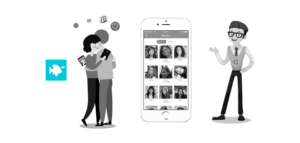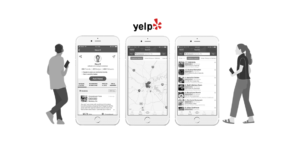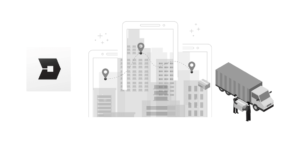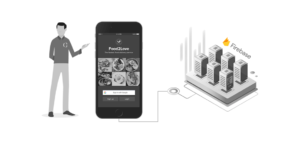Why Should You Build Grocery Delivery Apps Like InstaCart for Grocery Business?
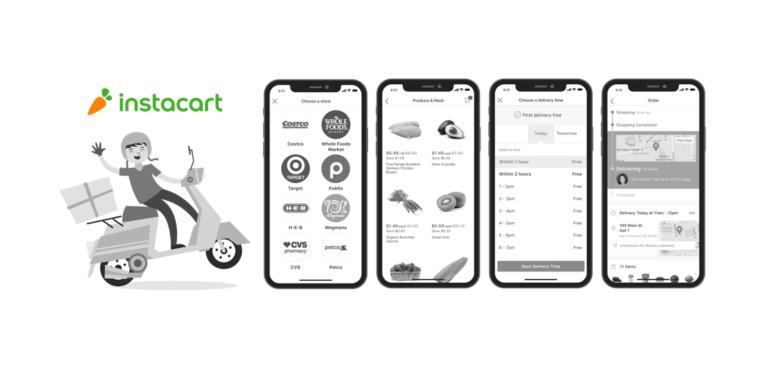
InstaCart raised $600Mn and was valued at $7.6Bn in a recently held funding round, led by D1 Capital Partners With plenty of opportunities and a good amount of fund backing the startup, the company is looking towards a bright future in the online grocery app industry.
Currently, the company serves close to 70% US households with the help of its existing partnerships and the new deals it is venturing into. With the Instacart and Walmart collaboration program in Canada, the users of the grocery service get access to around 17 Walmarts in the country.
The company is looking at growth opportunities, and it is hiring key personnel to improve its perspectives.
Before we move into the details of developing an app like Instacart and what all it takes, let’s take a look into how Instacart works.
Build Grocery Delivery App: Instacart At a Glance
What is Instacart, and how does it work? You need to understand this primarily, before developing the clone.
Instacart is your online grocery store, where you can order the things you need, and get them delivered on the same day. You get to shop for the groceries from major grocery stores such as Whole Foods, Shaw’s etc. The personal shopper at Instacart, picks up your order and then delivers it to your doorstep. So, instead of shopping for stockpiled fresh produce, you get to shop for actual fresh produce, on a daily basis.
There is a membership fee to subscribe to the Instacart services. You can avail the services by paying $99 for a year. This allows you to get free delivery for the year, for orders over a certain amount.
When you place the order on the app, you get details on the personal shopper, when they will finish shopping, and you will be updated as soon as they leave the store to come to your place.
There are various options available on the application to make payments easy for you. They have their own debit card, which you can use to complete the payments.
The question now remains, what is the revenue generation model used by Instacart?
- They have subscription models that allow users to become members and get access to free deliveries. This is one of the most accessible ways of generating revenue, identified by the startup.
- The second revenue generation model that the startup incorporated was delivery fees. They charged a certain amount as a delivery fee for all the users who are not members of the application.
- The profit sharing model that it has developed with the retailers registered on the platform is yet another revenue generation model developed by the company. Finally, they also generate profits and footfalls via discounts and deals offered on the application.
- The first thing Instacart did, before launching their services, was to understand the pain faced by the customers, while ordering groceries. The first issue was delivery. The deliveries were delayed, and sometimes the quantities or the items were mixed. Again delivering it to another place was a major challenge. What Instacart did?
They allowed users to choose the shops from where they wanted the groceries. The users could choose from more than one shop, and make the shopping quick and efficient. The personal shopper had to simply pick up the groceries, thus making the service faster than normal grocery delivery options. - Another major challenge of online delivery is ordering the wrong item or, getting the out of stock message after the order has been placed. To resolve this issue, Instacart has assigned a personal shopper along with a dedicated customer support team.
In case, the customer receives the wrong product, they can connect with the customer support team, and get it replaced. In case of out of stock items, the grocery app allows the users to add comments below the item, which makes it easy for the grocery store to update the item, and offer a better experience to the users. - Finally, the application comes with a set of impressive and highly necessary features that sets it apart from the others in the segment. The startup had looked into the existing grocery apps and looked at all the features that were missing in the app. They added these features into the app.
Strategies For an Experiential Grocery Shopping App
You need to plan and strategize thoroughly to launch an experiential app for your customers. Here we will take you through the strategies that you must incorporate.
- Make payments easy for the end user. With a personal shopper who delivers the groceries to the doorstep, the app has already enhanced your shopping experience. If you make payments easy and incorporate all the payment modes possible, you will make it easier and usable for the users. Introduce mobile payments as part of your application. Include all payment possibilities, such as credit/debit cards, Amazon Pay, Net Banking, Digital Wallets, and other payment modes.
- You need to categorize the products on the app, allowing the shoppers to buy the goods with ease. The categorization will allow the users to know where to shop the goods for, and how to buy them. With easy categorization, you can easily generate more revenue. The reason being, you would have added more products to the app, which will offer better options to the user. It also improves the footfall for your application. There is smart categorization that will help you keep your SKUs updated. There is the acute categorization, which will allow you to segregate the products according to their attributes.
Must-Have Features For Grocery Delivery App:
1) Shopping Lists: The first feature that you ought to introduce in your app is the shopping list. This allows the user to create their own list, and keep adding the things they want to buy to a single list. They can decide which shops they want to buy those items from at a later time.
2) Popular and Favorites: Most of the online grocery apps incorporate this feature, which allows them to segregate the items on the app into categories popular and favorites. You allow the users to directly shop for these items, thus making their shopping quick and efficient.
3) Deals and Discounts: Introducing this feature will help increase the footfall for your app and increase the profits that you will be able to generate as a result. The deals and discounts are the time of the year when most of the people prefer shopping and buying all the goods.
4) Tracking: The app should allow real-time tracking, which will enable them to know where the groceries are. This will tell the users whether the groceries have been picked up or not, and at what time it will reach their place.
5) Secure Payments: Finally, it is important to make payments secure for the user. Make sure you include all possible payment options and incorporate the security compliance.
Summing up
When developing Instacart clone, you need to innovate the solution to meet the new demands of the user and close the gaps that exist in the market.
Coruscate partners with businesses to develop their idea into a capable and marketable solution. We understand the users’ needs and how they use the app before constructing our solution. Get in touch with us for a capable mobile app development solution to your grocery startup ideas.



